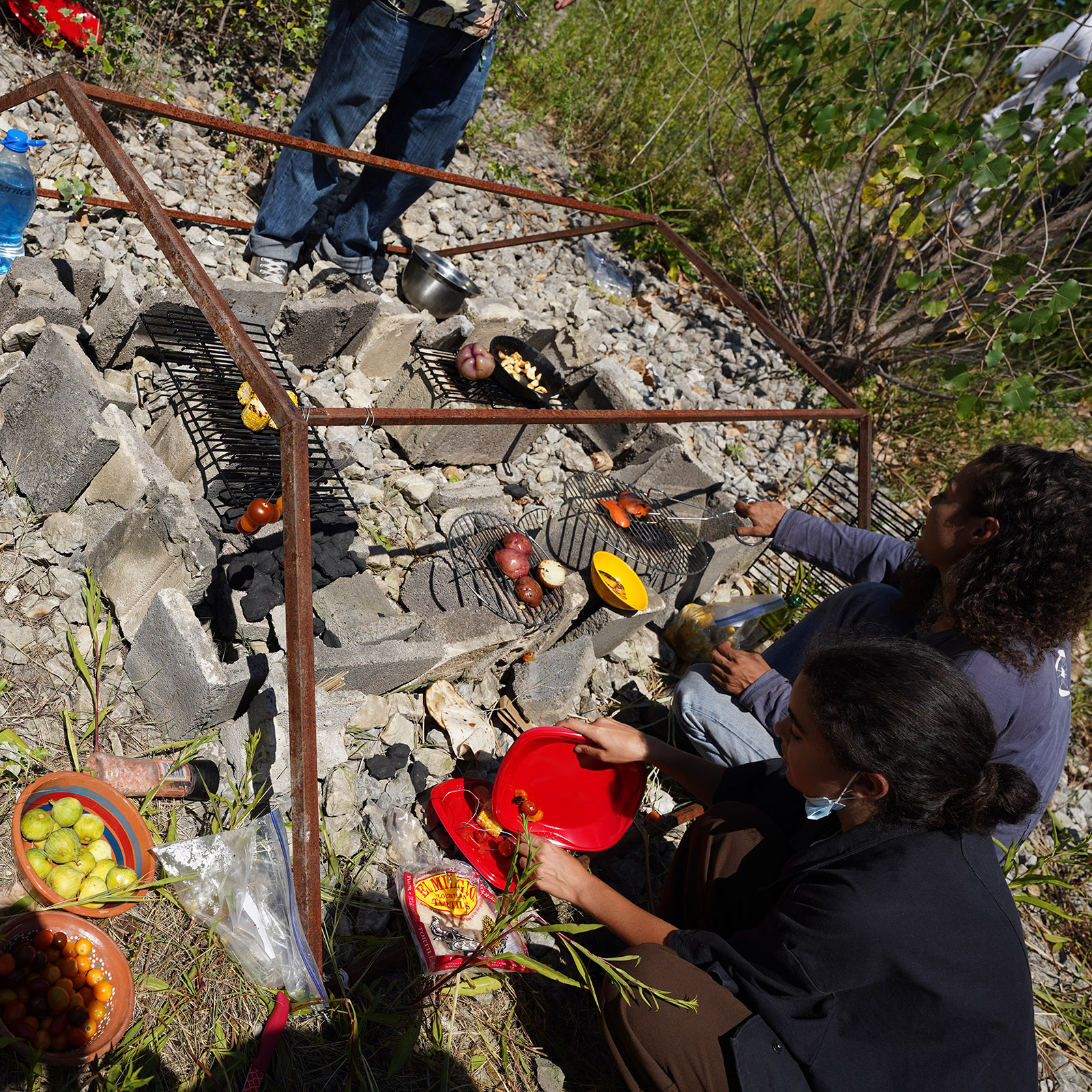open sheds used for what?
Art Project
with Cecila Resende Santos, Marina Resende Santos, Maya Nguyen, Paula Volpato, Tamara Becerra Valdez, & Elissa Osterland
Summer 2021
Open sheds used for what? is an experiment in the open construction of space.
An octagonal metal frame (the “shed”) acts as a mobile substrate for sculptural interventions, installations, and happenings in locations deemed vacant, abandoned, underused, or that are otherwise available for reimagination. Since June 2020, the project has had about thirty iterations in five locations in Bridgeport, Pilsen, Garfield Park, and now the South Branch industrial corridor.
On June 27, 2021, the frame was placed at its current location in the Damen Silos. The abandoned grain silos are surrounded by regrown grasses and nestled between the canal, a disused railroad, a data center, a package distribution facility, and the Midwest’s largest wholesale produce market: a time-travelling landscape of the city. Here, the structure becomes first a locus for close observation and learning, and then for imagination and intervention. Inhabitation becomes a form of learning through weekly visits, collective work days, and installations made from materials found on site.
An octagonal metal frame (the “shed”) acts as a mobile substrate for sculptural interventions, installations, and happenings in locations deemed vacant, abandoned, underused, or that are otherwise available for reimagination. Since June 2020, the project has had about thirty iterations in five locations in Bridgeport, Pilsen, Garfield Park, and now the South Branch industrial corridor.
On June 27, 2021, the frame was placed at its current location in the Damen Silos. The abandoned grain silos are surrounded by regrown grasses and nestled between the canal, a disused railroad, a data center, a package distribution facility, and the Midwest’s largest wholesale produce market: a time-travelling landscape of the city. Here, the structure becomes first a locus for close observation and learning, and then for imagination and intervention. Inhabitation becomes a form of learning through weekly visits, collective work days, and installations made from materials found on site.





